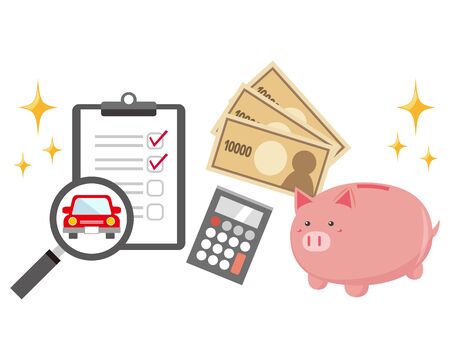Understanding Car Insurance Basics in the UK
If you’re a new driver in the UK, getting to grips with car insurance is an essential first step before hitting the road. The UK has specific legal requirements and terminology that can be confusing at first, but a solid understanding will help you make informed decisions and avoid costly mistakes. In this section, we’ll cover the main types of car insurance, explain what’s legally required, and break down some key terms every new driver should know.
Car Insurance Categories in the UK
| Type | Description | Who Is It For? |
|---|---|---|
| Third Party Only (TPO) | The minimum legal requirement. Covers damage or injury to others, not your own vehicle. | Drivers seeking the cheapest option or driving older cars. |
| Third Party, Fire & Theft (TPFT) | Covers third party damages plus fire damage or theft of your own vehicle. | Those who want extra protection without full comprehensive cover. |
| Comprehensive | Covers everything TPO and TPFT do, plus accidental damage to your own car. | New drivers with newer or more valuable vehicles. |
Legal Requirements for New Drivers
Under UK law, every car driven on public roads must have at least Third Party Only (TPO) insurance. Driving without valid insurance can result in fines, penalty points on your licence, and even disqualification. It’s also important to ensure your policy covers you personally as the named driver.
Key Car Insurance Terms Explained
- Excess: The amount you pay towards a claim before your insurer covers the rest.
- No Claims Bonus: A discount for each year you don’t make a claim.
- Premium: The cost of your insurance policy, usually paid monthly or annually.
- Policyholder: The person whose name appears on the insurance policy (that’s likely you!).
Summary
Selecting the right car insurance starts with understanding these basics. In the following steps, we’ll guide you through how to evaluate your needs and compare policies so you can drive confidently—and legally—in the UK.
2. Assessing Your Needs as a New Driver
Before diving into the world of car insurance, it’s crucial for new drivers in the UK to evaluate their unique needs. Choosing the right cover starts with understanding how your daily routines, vehicle choice, and personal situation affect your insurance requirements. Here are the key factors you should consider:
Driving Habits
Your driving frequency and purpose play a significant role in determining the type of policy that suits you best. For example, someone who commutes daily will have different needs compared to a driver who only uses their car occasionally for leisure.
| Driving Habit | Insurance Consideration |
|---|---|
| Daily Commuting | May require comprehensive cover; higher annual mileage could increase premiums |
| Occasional Use | Third party, fire and theft might suffice; lower mileage may reduce costs |
| Long Distance Travel | Look for policies with breakdown cover or windscreen protection |
Vehicle Type
The make, model, age, and value of your car significantly impact your premium. Sports cars or high-value vehicles usually attract higher insurance costs, while older or less powerful cars tend to be more affordable to insure.
| Vehicle Type | Impact on Premium |
|---|---|
| Small Hatchback | Lower insurance group; generally cheaper premiums |
| Luxury/Sports Car | Higher risk category; expensive to insure |
| Used/Older Vehicle | Might qualify for lower-cost cover but ensure it meets safety standards |
Personal Circumstances
Your age, address, and employment status also influence your insurance options. New drivers under 25 or those living in busy urban areas often face higher premiums due to perceived risk. Students or apprentices may want to check for specialist policies designed for young people.
| Circumstance | Effect on Insurance Choices |
|---|---|
| Youth (under 25) | Higher risk profile; consider black box/telematics policies to save money |
| Urban Location | Increased risk of theft/accidents; secure parking can help lower premiums |
| Student Status | Certain insurers offer discounts or tailored plans for students and apprenticeships |
Tip:
If you’re unsure which factors apply most to you, create a checklist of your habits and circumstances before requesting quotes. This will help you compare policies effectively and ensure you only pay for what you truly need.

3. Types of Car Insurance Policies Available
When you’re a new driver in the UK, understanding the different types of car insurance policies is crucial for making an informed decision. The UK offers three main levels of cover: Third Party, Third Party Fire and Theft, and Comprehensive. Each policy comes with its own benefits and drawbacks, especially for first-time drivers who may be conscious about both cost and coverage.
Breakdown of Car Insurance Options
| Type of Policy | What’s Covered | Pros for New Drivers | Cons for New Drivers |
|---|---|---|---|
| Third Party Only (TPO) | Damage to other people’s vehicles or property; injury to others. | Often the cheapest option; legal minimum requirement in the UK. | No cover for your own vehicle; can end up costly if your car is damaged or stolen. |
| Third Party, Fire and Theft (TPFT) | Everything in TPO plus cover if your car is stolen or damaged by fire. | A step up in protection without a huge jump in price; peace of mind against theft and fire. | Still no cover for accidental damage to your own car; may not be much more expensive than TPO for some drivers. |
| Comprehensive | Covers all of the above plus accidental damage to your own car, regardless of fault. | The most complete protection; often includes extras like windscreen repair and personal accident cover. | Tends to be the most expensive option; may offer features unnecessary for some new drivers. |
Which Policy is Right for You?
For many first-time drivers, it’s tempting to opt for Third Party Only as it appears cheapest. However, this isn’t always the case—sometimes Comprehensive policies are competitively priced, especially for younger drivers. Consider how much you rely on your car, where you live, and whether you could afford to replace or repair your vehicle if something went wrong. Taking time to weigh these pros and cons will help you select the policy that best matches your needs and budget as a new driver in the UK.
4. How to Compare Car Insurance Quotes Effectively
When it comes to choosing car insurance as a new driver in the UK, comparing quotes is more than just looking at the cheapest monthly premium. It’s about finding real value for money and the right level of cover. Here are some practical tips to help you navigate the comparison process, understand excess, and scrutinise policy features to secure the best deal.
Practical Tips for Sourcing Quotes
Start by using reputable UK comparison websites such as MoneySuperMarket, Compare the Market, or GoCompare. Don’t forget to check direct offers from well-known insurers like Direct Line or Aviva, as they sometimes offer exclusive deals not available on comparison sites. Always use consistent information when requesting quotes — this ensures you’re making like-for-like comparisons.
Understanding Excess: What You’ll Pay If You Claim
Excess is the amount you agree to pay towards a claim before your insurer contributes. There are typically two types:
| Type of Excess | Description |
|---|---|
| Compulsory Excess | Set by your insurer and cannot be changed. |
| Voluntary Excess | You can choose this amount; increasing it may lower your premium but means higher costs if you claim. |
For new drivers, striking a balance between affordable premiums and manageable excess is crucial. Avoid setting your voluntary excess too high just for a cheaper quote—you need to be able to afford it in case of an accident.
Scrutinising Policy Features
Always read through what each policy actually covers. Comprehensive policies often include extras like windscreen cover or courtesy cars, while third-party only policies are much more basic. Key features to compare include:
- Personal belongings cover
- Breakdown assistance
- No claims discount protection
- Legal expenses cover
If you’re unsure about any policy detail, contact the insurer directly for clarification—don’t make assumptions!
Summary Table: Comparing Quotes Checklist
| Feature | Why It Matters? |
|---|---|
| Total Premium (Annual/Monthly) | Your main cost—check both annual and monthly figures. |
| Type & Amount of Excess | Affects your out-of-pocket expense if claiming. |
| Main Policy Features | Covers valuable extras beyond basic legal requirements. |
| No Claims Discount Terms | Affects long-term savings potential. |
By following these steps, you’ll be well-equipped to find a car insurance policy that fits your needs as a new UK driver—without paying over the odds or missing vital coverages.
5. Ways to Reduce Premiums for New Drivers
For new drivers in the UK, car insurance can be a significant expense, but there are practical ways to make your premiums more affordable without compromising on essential cover. Here’s how you can take control of your insurance costs:
Build Your No-Claims Bonus
A no-claims bonus (NCB) rewards careful driving by reducing your premium for each year you don’t make a claim. Over time, this can lead to substantial savings. As a new driver, start building your NCB from your very first policy—avoid making small claims and always drive cautiously. Insurers often offer discounts that increase with each consecutive claim-free year.
| Years Without Claims | Typical Discount (%) |
|---|---|
| 1 | 10-20% |
| 2 | 20-30% |
| 3 | 30-40% |
| 4+ | Up to 60% |
Consider Telematics (Black Box) Policies
Telematics policies, commonly known as black box insurance in the UK, use technology fitted to your car to monitor driving habits such as speed, braking, and the times you drive. If you demonstrate safe and responsible driving, insurers may reward you with lower premiums at renewal. This is particularly beneficial for new drivers under 25, who typically face higher insurance costs.
Advantages of Black Box Policies:
- Potential for immediate premium reductions based on good driving behaviour
- Encourages safer driving habits
- Some policies provide feedback or alerts to help improve your driving
Selecting the Right Voluntary Excess
The voluntary excess is the amount you agree to pay out-of-pocket in the event of a claim. Choosing a higher voluntary excess can reduce your monthly or annual premium. However, ensure that the total excess (voluntary plus compulsory) remains affordable if you need to make a claim. It’s a balancing act between lowering premiums and being financially prepared for an unexpected incident.
| Voluntary Excess (£) | Potential Impact on Premium |
|---|---|
| £100 | Slight reduction |
| £250 | Moderate reduction |
| £500+ | Larger reduction, but more personal risk |
Key Tip:
Always compare quotes with different excess levels to find the best balance for your budget and risk tolerance.
6. Final Steps: Applying and Keeping Your Policy Up to Date
Once you’ve compared options and selected your ideal car insurance policy, it’s time to complete your application and ensure your cover remains appropriate as your driving experience grows. Here’s a clear guide for new drivers in the UK on how to finalise your application, choose payment methods, and maintain up-to-date insurance.
Completing Your Application Accurately
Accuracy is essential when applying for car insurance. Any mistakes or omissions can result in higher premiums or even invalidate your policy. Make sure you:
- Double-check personal information: Ensure your name, address, and date of birth match official records.
- Declare all relevant details: Include any modifications to the vehicle, previous claims, motoring convictions, and accurate annual mileage estimates.
- Provide correct No Claims Discount (NCD) information: If applicable, attach proof of NCD from previous insurers.
Key Details Required for UK Car Insurance Applications
| Required Information | Example/Note |
|---|---|
| Personal Details | Name, address, date of birth |
| Driving Licence Information | Type of licence, years held |
| Vehicle Details | Make, model, registration number |
| Claims & Convictions History | Past 5 years typically required |
| No Claims Discount Proof | If transferring from another insurer |
Selecting Payment Options That Suit You
The majority of UK insurers offer flexible payment options. Choosing the right one can help with budgeting as a new driver. Common payment methods include:
- Annual Payment: Pay the full year upfront—often cheaper overall as some insurers charge extra for monthly instalments.
- Monthly Instalments: Spread the cost across 12 months—ideal for managing cash flow but may include interest or admin fees.
- Direct Debit: Convenient and automatic; check if setup fees apply.
- Credit or Debit Card: Used for one-off payments or initial deposits.
Comparison of Payment Methods for UK Car Insurance
| Payment Method | Main Advantage | Pitfall to Watch For |
|---|---|---|
| Annual Upfront Payment | No interest charges; often lower total cost | Larger single outlay required |
| Monthly Instalments | Easier budgeting; smaller regular payments | Total cost may be higher due to interest/admin fees |
| Direct Debit Setup | No missed payments; hassle-free renewals | Poor account management could lead to missed payments/fees |
The Importance of Regularly Reviewing Your Cover
Your first policy might not always remain the best fit as you gain experience or your circumstances change. Regularly reviewing your car insurance ensures you are neither underinsured nor overpaying. Keep these tips in mind:
- Annual Review: Check if your needs have changed at renewal time—new job locations, additional drivers, change of address or mileage adjustments all impact premiums.
- Add-Ons & Extras: As you become more confident on the road, consider whether extras like breakdown cover or legal protection are still necessary or if other features would be beneficial.
- Loyalty vs. Switching: Don’t assume loyalty always pays; use price comparison tools each year before renewing to see if better deals exist elsewhere.
Your Ongoing Insurance Checklist:
- Update personal and vehicle details promptly after any changes.
- Keenly check each renewal notice—don’t let your policy auto-renew without comparison shopping.
- If you add named drivers (e.g., family members), notify your insurer immediately.
A proactive approach will help keep your policy valid and cost-effective while giving you peace of mind every time you’re on the road in the UK as a new driver.


